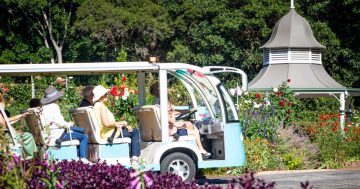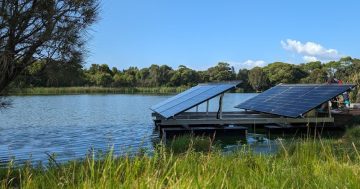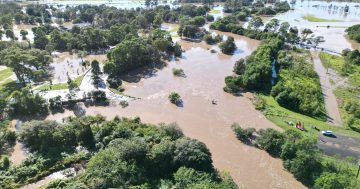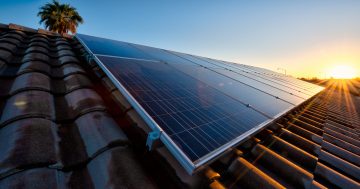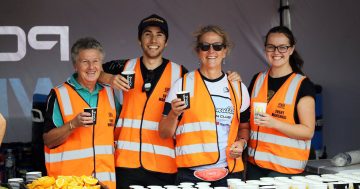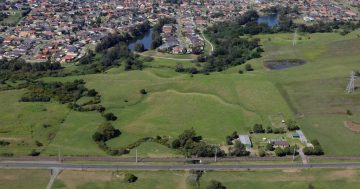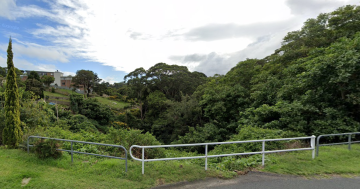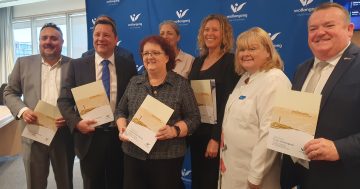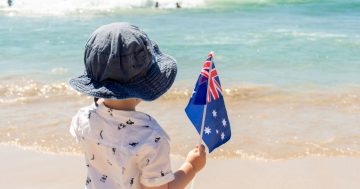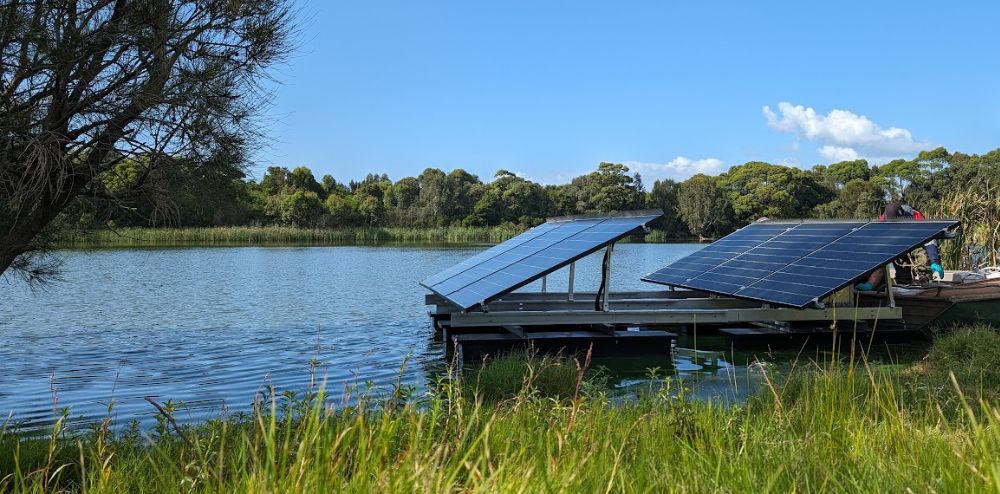
Wollongong City Council hopes these solar-powered pumps will retard a persistent blue-green algal bloom at Coomaditchie Lagoon. Photo: Wollongong City Council.
An experimental method to combat blue-green algae blooms has been installed in Coomaditchie Lagoon.
Wollongong City Council purchased two solar-powered aeration pumps from BioRemedy and installed them in the lagoon last month.
The council hopes the power of the sun will hinder a persistent blue-green algal bloom affecting the popular waterway.
The pumps promote water movement and increase aquatic oxygen levels, which hinders blue-green algae growth while encouraging other microorganisms and good algae to grow.
Wollongong City Lord Mayor Councillor Gordon Bradbery AM said Coomaditchie Lagoon in Port Kembla is one of the city’s largest lagoons and an important wildlife habitat.
Over winter, warm temperatures and high nutrient levels led to the persistent algal bloom.
“While most algae are harmless, blue-green algae, or cyanobacteria, impacts water quality and produces toxins that can be harmful to people and animals,” he said.
“Council staff have been monitoring the bloom and, when the site was registered as a ‘Red Alert’ by WaterNSW, erected signage to warn visitors against contact with the water, including drinking, fishing, swimming and boating.
“We’ve done our homework on the best way to intervene. These pumps are a low impact measure to move and aerate the water of this much-loved community spot.”
Children and pets are more susceptible to the effects of toxins, which can cause gastro, respiratory illness, rashes, and flu-like symptoms. Do not allow either in the water, and seek medical advice if you are concerned about their health.
Prior to commencement of works, the council completed an Aboriginal Heritage Due Diligence Assessment and has been in regular contact with the Coomaditchie United Aboriginal Cooperation.
Cr Bradbery said it was not possible to predict how long the bloom would last.
“We will continue to monitor water quality and only remove signage once blue-green algae levels return to a safe level,” he said.
There are ways for the community to help discourage blue-green algal blooms.
The easiest is to limit the amount of nutrients getting into our waterways through runoff.
Detergents and fertilisers contain a high concentration of nitrogen and phosphorus. You can stop them getting into our creeks, lakes and lagoons by preventing nutrients from washing into roadside drains that flow into local waterways, for example, by washing your car on the lawn rather than on the road, using phosphorus-free detergents, and reducing the use of fertilisers where possible.
Promoting ecological health can also help the environment be more resistant to blooms.
A good way to do this is by helping to rehabilitate waterways – volunteering with Bushcare will make sure your efforts go where they’re most effective.








